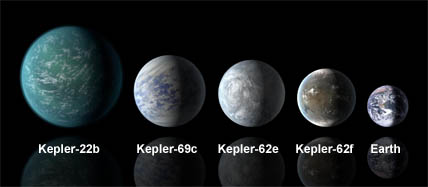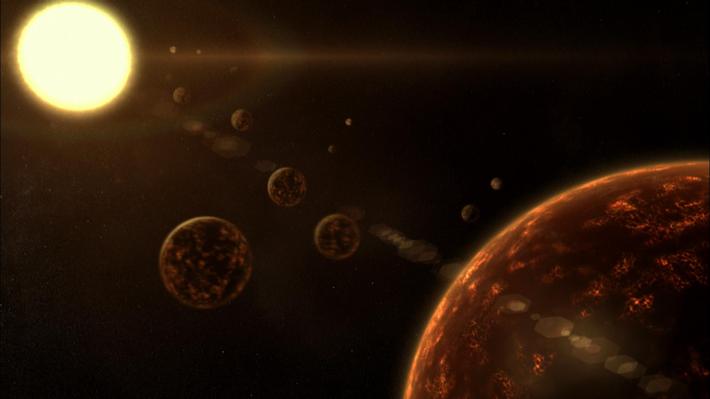Universe is an unravelled mystery. It consists of billions of galaxies which are composed of billions of stars and planets, intrastellar clouds and other celestial bodies. But planet earth is the only place which contains life, as far as we know. Are we alone in this universe? We cannot exactly say, but there is a probability of anywhere else in the universe harboring life. It can be a life completely different from life on earth or similar in form to it. There is an uncertainty about what we are expecting to see as extraterrestrial life, but many space missions have been conducted to search for alien life based on factors that led to the evolution of life on planet earth.
In most of the space missions, they pay great attention to planets which exist within the habitable zone of a star. “Habitable zone” is a region which is not too close and nor too far from the star. Therefore the temperature inside the habitable zone supports harboring life on the planet. It helps to maintain liquid water on the planet surface. Shift of habitable zone, toward or outward from the star mainly depends on the star’s luminosity. Luminosity of the star must remain stable to support evolving life, on the planet rotating around it. Normally a star’s luminosity increases with time, but this process should not happen too sharply. It must be relatively stable.
Existence within the habitable zone is not the only criteria to define the planet as ‘habitable’. Presence of liquid water is essential for arising of life on a planet. Water is the major component which contributes to develop any kind of life form from micro scale to macro scale. It not only serves as a reaction medium for organic molecules, but also facilitates the aggregation of bio molecules. There is evidence of surface water bodies which existed in the past, on Mars. It is a major fact that strengthens the evidence for extinct life on Mars. Presence of liquid water on the surface is possible if the atmospheric pressure and temperature are sufficient to maintain the liquid phase.
The atmosphere of the planet is important for life. Normally a star emits harmful UV rays and X rays which have a high potential to break down chemical bonds within essential bio molecules. The atmosphere can prevent these harmful radiations from reaching the planet surface. It plays a major role in the planet ‘s temperature regulation process, avoiding experience of extreme temperatures. Our neighbor, the moon, does not possess an atmosphere. Because of that, its temperature varies between 100 K and 373 K.
Atmospheric pressure, exerted on the surface is important in determining the boiling point of water. When pressure is decreased, boiling point goes down resulting more evaporation or total loss of liquid phase on the surface. In a planet which has this situation, liquid water can exist below the surface of planet. To retain the atmosphere, sufficient gravitational force which can prevent the escape of gaseous molecules to the space, is a vital factor. Lower planet mass produces a very low gravity field which is not powerful enough to retain an atmosphere. Thus, planet mass is also important to make it favourable for life. The gas giants of our solar system, Jupiter, Saturn and Uranus have thick atmospheres which occur due to a high gravity field, but they are not suitable for life because high pressure exerted on the surface, reduces the potential of harboring life.
Planetary plate tectonics, which indicate that the planet is geo-thermally active, is a major feature of a habitable planet. Some rocky planets have a molten core which is a great source of geothermal energy. Continent plates and ocean plates are constantly gliding over the mantle due to convectional heat currents. Low dense continent plates and high dense ocean plates move in different directions, resulting in collisions between plates. This phenomenon is known as “plate tectonics”. The collision usually causes subduction, which leads to the slide of a dense ocean plate under a continental plate.
This incident supports recycling of raw materials and minerals and replenishing of atmospheric gases. The molten core can generate a magnetic field around the planet, which protects it from cosmogenic radiation. Therefore a geo-thermally active planet facilitates arising of life. Planet Mars is not a geo-thermally active planet, but scientists believe that it had been active, a long period ago.

Many new planetary systems were found during Kepler mission and more will be uncovered during space missions like TESS. Scientists will succeed in finding habitable planets among them. They give more attention to “super earths”, which is the family of planets having the highest potential of harboring life. Our earth is a small member of this family. Super earths’ masses vary between one to ten times as that of earth and their radii are smaller than two times as that of earth. They are composed of rocky material and water, but the percentage of water varies between them. Many of them contain water up to 50%-70% by mass. Planet earth only contains 0.02% of water by mass.
Super earths which are dry rocky planets or water worlds, have sufficient mass to generate enough gravitational fields to retain the atmosphere. Some rocky super earths show plate tectonic activities also. Therefore super earths are the best places for arising life. The above image shows several super earths which were found during Kepler mission.
In the future, traces of life might be found among these habitable planets. We cannot predict about the form of life. It can be a microbial life form or a highly intelligent life form. But intelligent life forms should be relatively rare because evolution of that kind of a life form takes a very long time period, comparative to microbial life. However we have to wait with expectation to see alien life beyond earth.
Image Courtesy:
https://image.pbs.org/poster_images/assets/wgbh/flbe12/flbe12_vid_planetform/flbe12_vid_planetform_thumb.jpg.resize.710×399.jpg
https://www.skyandtelescope.com/wp-content/uploads/Kepler_SuperEarth_comparison.jpg
References:
https://courses.edx.org/courses/course-v1:HarvardX+SPU30x+3T2017/course/
https://www.scienceabc.com/nature/what-makes-a-planet-habitable.html

